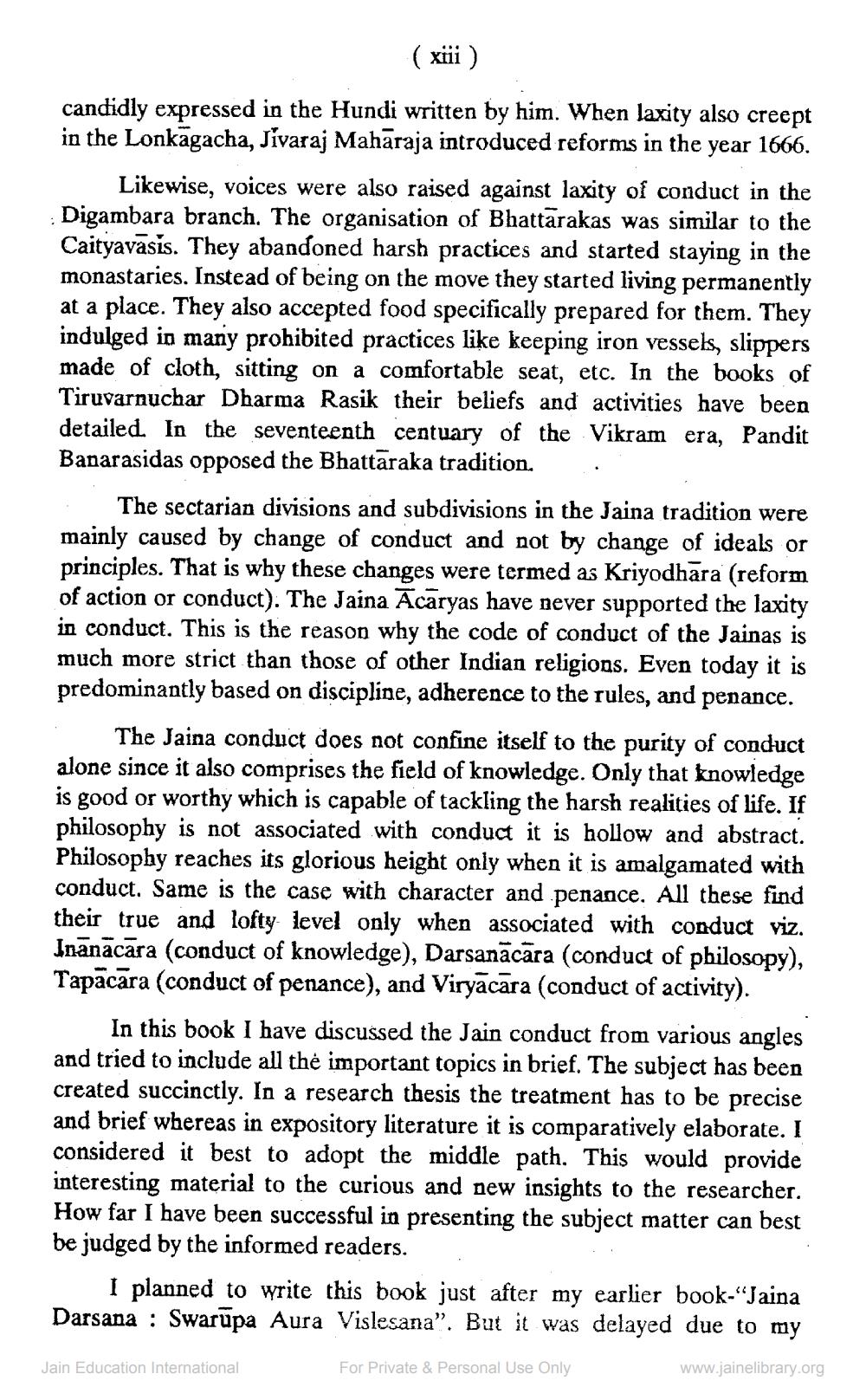________________
( xiii)
candidly expressed in the Hundi written by him. When laxity also creept in the Lonkāgacha, Jivaraj Mahāraja introduced reforms in the year 1666.
Likewise, voices were also raised against laxity of conduct in the · Digambara branch. The organisation of Bhattarakas was similar to the Caityavasis. They abandoned harsh practices and started staying in the monastaries. Instead of being on the move they started living permanently at a place. They also accepted food specifically prepared for them. They indulged in many prohibited practices like keeping iron vesseks, slippers made of cloth, sitting on a comfortable seat, etc. In the books of Tiruvarnuchar Dharma Rasik their beliefs and activities have been detailed. In the seventeenth centuary of the Vikram era, Pandit Banarasidas opposed the Bhattāraka tradition. . : The sectarian divisions and subdivisions in the Jaina tradition were mainly caused by change of conduct and not by change of ideals or principles. That is why these changes were termed as Kriyodhara (reform of action or conduct). The Jaina Ācāryas have never supported the laxity in conduct. This is the reason why the code of conduct of the Jainas is much more strict than those of other Indian religions. Even today it is predominantly based on discipline, adherence to the rules, and penance.
The Jaina conduct does not confine itself to the purity of conduct alone since it also comprises the field of knowledge. Only that knowledge is good or worthy which is capable of tackling the harsh realities of life. If philosophy is not associated with conduct it is hollow and abstract. Philosophy reaches its glorious height only when it is amalgamated with conduct. Same is the case with character and penance. All these find their true and lofty level only when associated with conduct viz. Inanācāra (conduct of knowledge), Darsanācāra (conduct of philosopy), Tapācara (conduct of penance), and Viryācara (conduct of activity).
In this book I have discussed the Jain conduct from various angles and tried to include all the important topics in brief. The subject has been created succinctly. In a research thesis the treatment has to be precise and brief whereas in expository literature it is comparatively elaborate. I considered it best to adopt the middle path. This would provide interesting material to the curious and new insights to the researcher. How far I have been successful in presenting the subject matter can best be judged by the informed readers.
I planned to write this book just after my earlier book-“Jaina Darsana : Swarūpa Aura Vislesana". But it was delayed due to my
Jain Education International
For Private & Personal Use Only
www.jainelibrary.org




